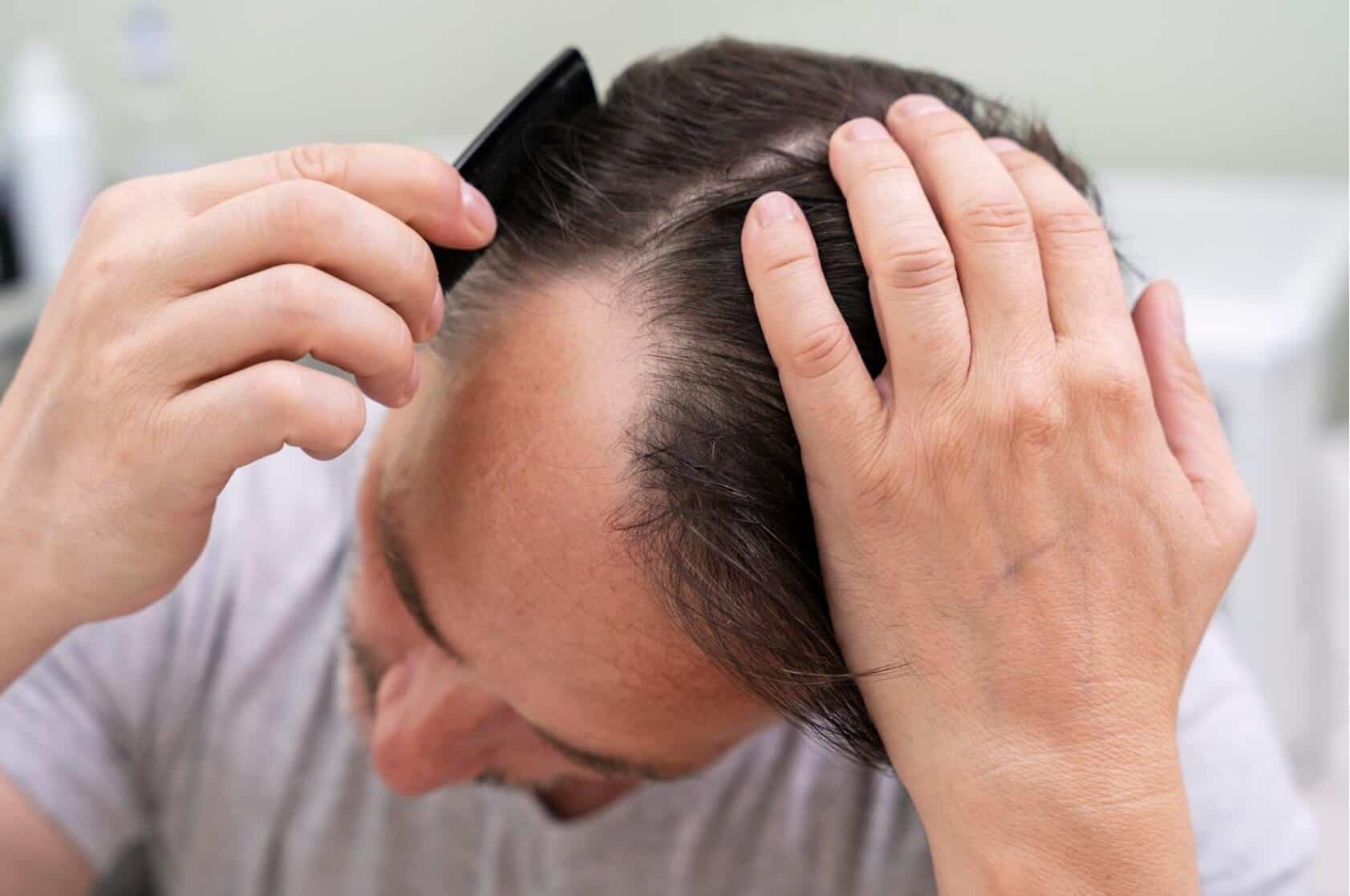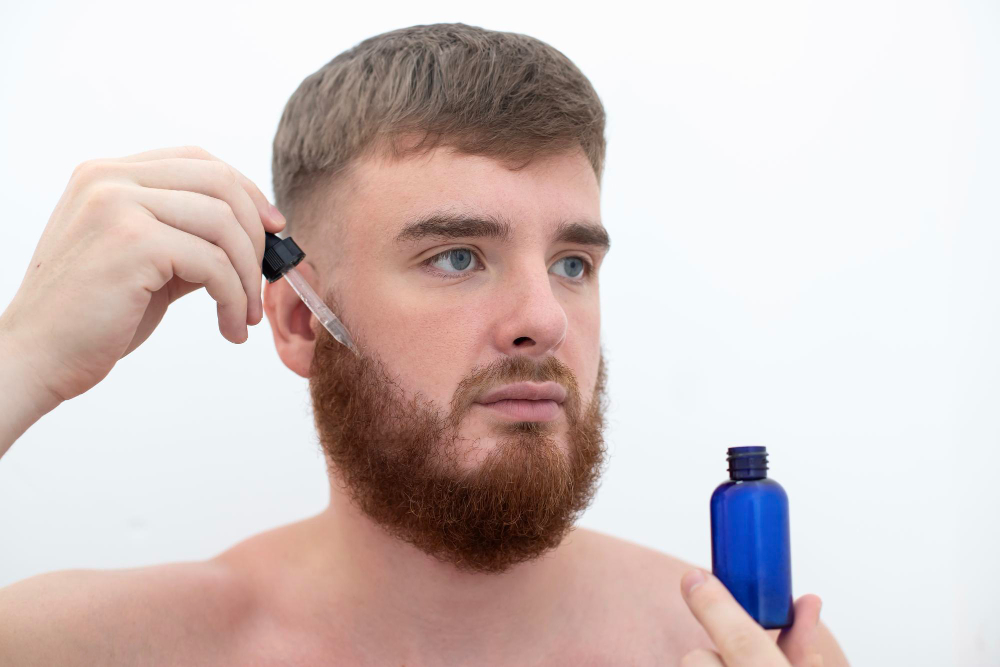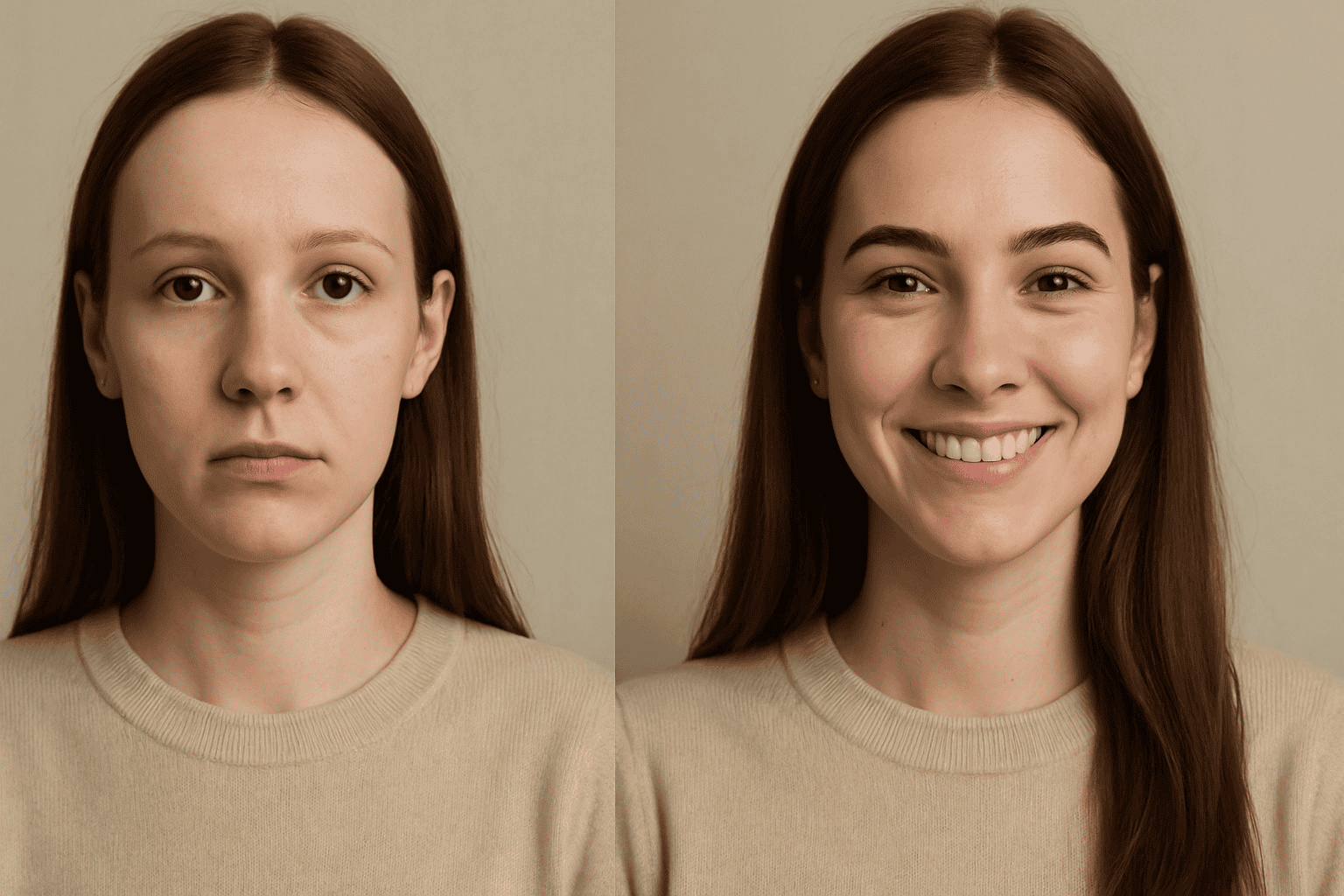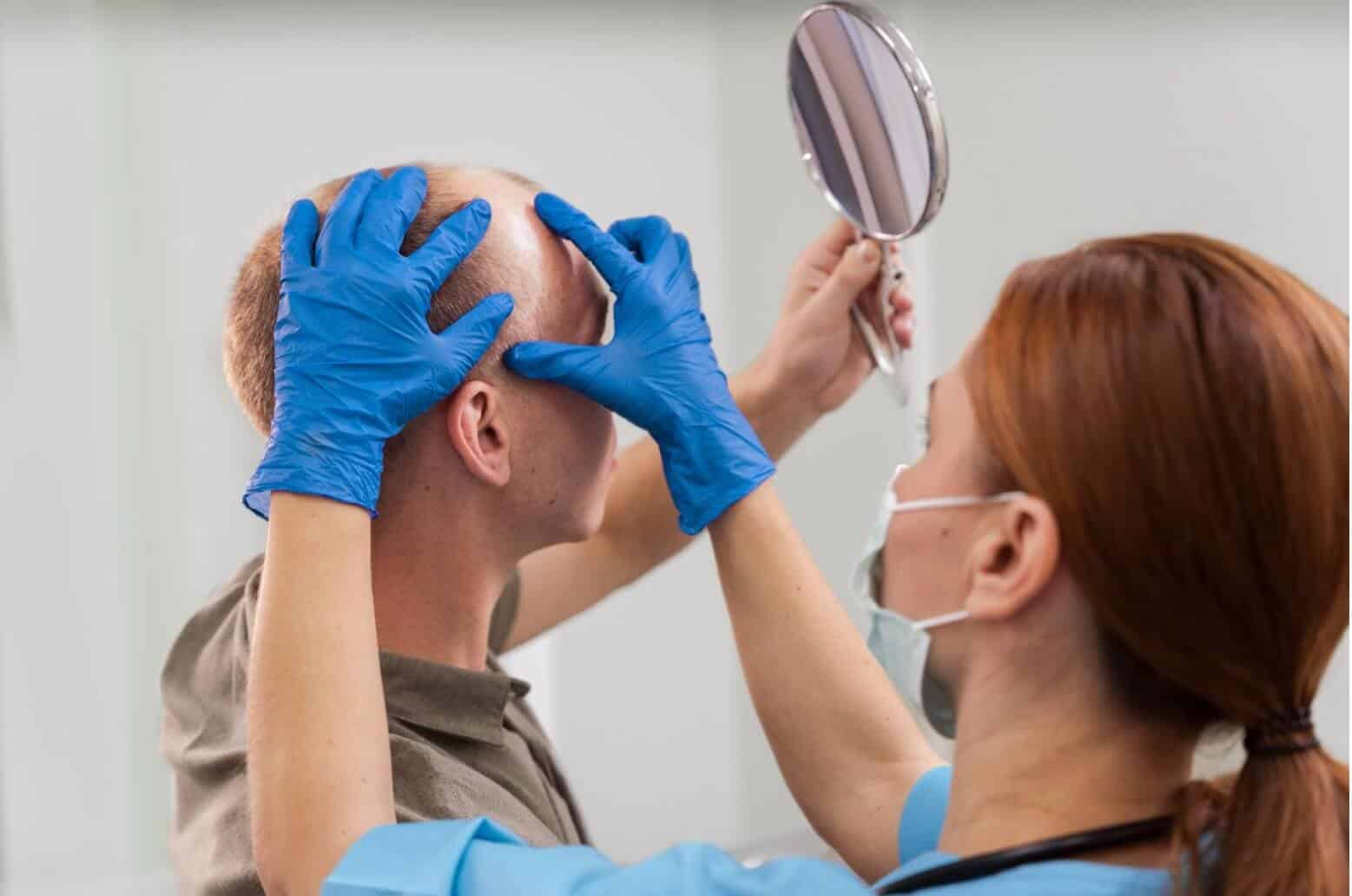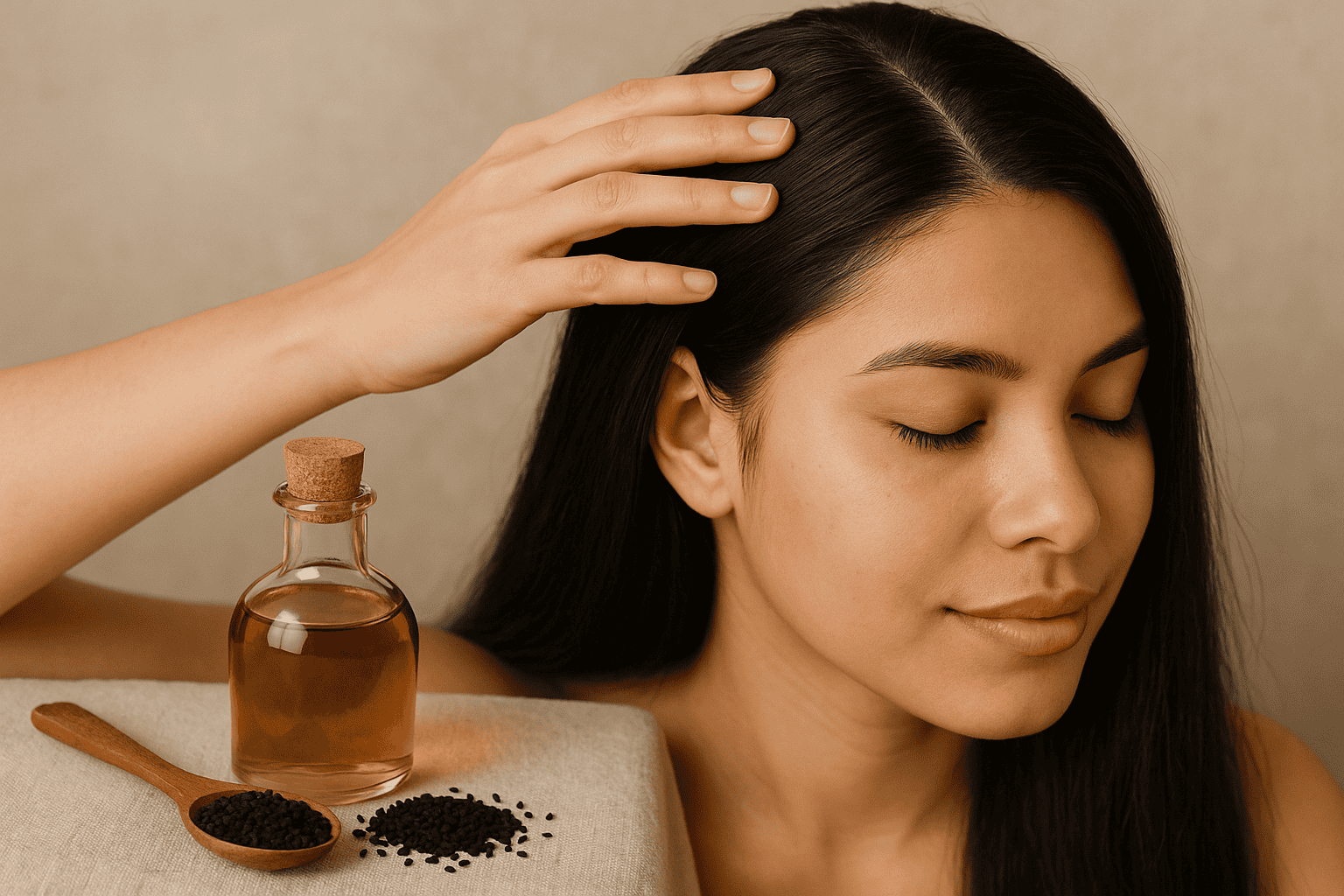Yes, steroids can cause hair loss through increased DHT levels, particularly in those genetically predisposed. Recovery depends on genetics, duration of use, and early intervention. Some hair may grow back after stopping steroids.
- Dr Suhail Alam
- Reading Time: 10 Mins
Steroids are powerful medications used to treat various medical conditions and enhance athletic performance. While they offer significant benefits, many users experience an unwelcome side effect: hair loss. This distressing experience leaves many wondering if their hair will ever return to normal. So, in this article, we will explain what actually happens to your hair when using steroids, and more importantly, what you can do about it.
Key Takeaways
- Both anabolic and corticosteroids can trigger hair loss, with anabolic steroids posing higher risk by increasing DHT levels.
- Genetic predisposition plays a major role; steroids typically accelerate hair loss in those already susceptible to pattern baldness.
- Recovery potential depends on early intervention, steroid type/duration, and using treatments like minoxidil or finasteride.
Table of Contents
How Steroids Can Affect Hair Growth
Steroids impact your hair through different mechanisms depending on the type you’re using. The two main categories affect your body quite differently.
Anabolic steroids are synthetic versions of testosterone used to build muscle and enhance athletic performance. These compounds can significantly increase DHT (dihydrotestosterone) levels in your body. DHT is a powerful hormone that binds to receptors in hair follicles, causing them to shrink and produce thinner, shorter hairs.
A 2023 review published in PMC found that anabolic androgenic steroid use in male athletes appears strongly associated with androgenetic alopecia, though most data comes from self-reporting rather than clinical measurement.
Corticosteroids are anti-inflammatory medications used to treat conditions like asthma, arthritis and skin disorders. While these can occasionally cause hair loss through disruption of the normal hair growth cycle, they’re also ironically used to treat certain types of alopecia.
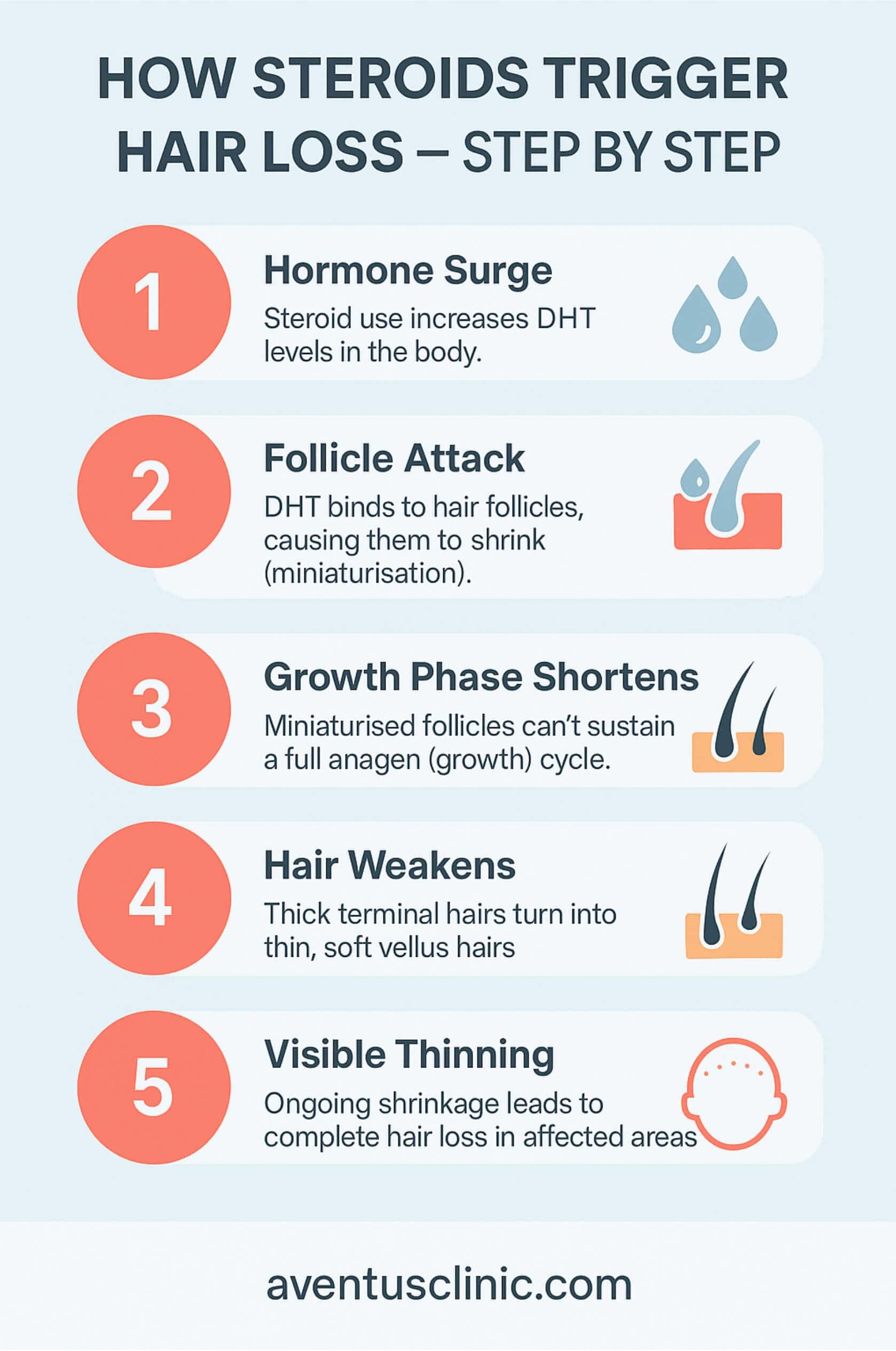
This process resembles androgenetic alopecia (male pattern baldness) but often occurs more rapidly due to the heightened hormonal environment.
Risk Factors for Steroids Induced Hair Loss
Not everyone who takes steroids experiences hair loss. Several factors determine your susceptibility:
Genetic Predisposition
Your family history plays the most significant role. If male or female pattern baldness runs in your family, steroids may trigger or accelerate this genetic predisposition. According to a 2022 NCBI book chapter, even normal androgen levels can cause hair loss if genetic susceptibility exists.
Dosage and Duration
A clear correlation exists between steroid dosage, length of use, and hair loss severity. Higher doses and longer usage increase your risk significantly. The 2022 Frontiers study noted that self-reported alopecia increased from approximately 2% at baseline to 12% by the end of an AAS cycle.
Type of Steroid
Some steroids carry higher risks than others. Compounds with stronger androgenic properties, like testosterone propionate or trenbolone, typically cause more severe hair loss than milder options.
This table outlines the hair loss risk associated with common steroids:
| Steroid Type | Hair Loss Risk | Notes |
|---|---|---|
| Testosterone | High | Most directly converts to DHT |
| Trenbolone | High | Strong androgenic properties |
| Deca-Durabolin | Moderate | Less androgenic than testosterone |
| Anavar | Low to Moderate | Milder androgenic effects |
| Prednisone (corticosteroid) | Variable | Typically causes temporary shedding |
Age and Gender Factors
Younger men with a genetic predisposition may experience an earlier onset of male pattern baldness when using anabolic steroids. Women typically experience different patterns of hair loss, often with overall thinning rather than receding hairlines.
Signs and Symptoms of Hair Loss from Steroids
Recognising steroid-induced hair loss early improves your chances of successful intervention. Unlike natural shedding (50-100 hairs daily), steroid-related hair loss often develops in specific patterns.
For men, thinning typically begins at the temples and crown, creating the classic “M” shaped hairline. Women usually experience more diffuse thinning across the scalp, particularly noticeable as a widening part line.

Unlike some forms of hair loss, steroid-induced shedding rarely causes inflammation or scalp pain. The progression rate varies widely between individuals, with some experiencing dramatic thinning within weeks while others see gradual changes over months.
Can Hair Grow Back After Steroids Induced Hair Loss?
The million-pound question: is steroid hair loss reversible? The answer depends on several factors.
For corticosteroid-induced telogen effluvium, the prognosis is generally good. Once you stop taking the medication or your body adjusts to it, normal hair growth usually resumes within 3-6 months.
For anabolic steroid users, recovery depends largely on:
- How long you’ve been using steroids
- Your genetic predisposition to hair loss
- Whether permanent follicle miniaturisation has occurred
Early intervention is crucial. If you stop steroid use before permanent damage occurs, some regrowth is possible. However, if you’re genetically predisposed to baldness, steroids may have simply accelerated an inevitable process.
Medical Advice for Steroid Hair Loss
Seeking professional guidance is crucial when dealing with steroids induced hair loss.
Never discontinue prescribed steroids without medical consultation. Abruptly stopping corticosteroids can cause serious health problems, including adrenal crisis. Your doctor can help create a tapering schedule if necessary.
If you’re using anabolic steroids without prescription, consult with a healthcare provider about safely discontinuing use and addressing any withdrawal symptoms.
Consider seeing a dermatologist who specialises in hair disorders. They can assess the extent of your hair loss and recommend appropriate treatments.
Blood tests may help determine hormone levels and identify any underlying conditions contributing to your hair loss.
Available medical treatments include:
- Minoxidil (2% or 5%) to stimulate follicles and prolong the growth phase
- Finasteride or dutasteride to block DHT production (for men only)
- Anti-inflammatory treatments for scalp conditions
- Platelet-rich plasma (PRP) injections
- Low-level laser therapy
The 2024 JAAD review emphasises the need for more research on medication-induced hair loss, including from steroids, highlighting that objective data remains limited.
How to Prevent Steroid Hair Loss
If you need to use steroids, several strategies may help minimise hair loss:
Use the lowest effective dose for the shortest necessary time. Work with your doctor to find the minimum amount needed to manage your medical condition.
Consider alternative medications if appropriate. For some conditions, non-steroidal options might provide adequate treatment with fewer hair-related side effects.
Support your hair through proper nutrition. A diet rich in protein, iron, zinc, vitamins A, C, D, E and B-complex helps maintain healthy hair growth. The addition of omega-3 fatty acids may help reduce inflammation that contributes to hair loss.
Gentle hair care practices prevent additional stress to vulnerable follicles. Avoid harsh shampoos, excessive heat styling, tight hairstyles and chemical treatments.
Manage stress levels, as psychological stress can exacerbate hair shedding. Regular exercise (beyond bodybuilding), adequate sleep and relaxation techniques support overall hair health.
Final Thoughts
Steroids induced hair loss represents a challenging but often manageable side effect for many users. If you’re concerned about hair loss from steroid use, we offer personalised assessment and treatment plans tailored to your specific situation. Our advanced hair restoration techniques have helped thousands regain their confidence and their hair. Book your free consultation today at Aventus Clinic and take the first step toward healthier hair.
FAQs
Are all steroids likely to cause hair loss?
No, not all steroids cause hair loss. Corticosteroids like prednisone may cause temporary shedding, while anabolic steroids with high androgenic activity pose a greater risk. Individual genetic susceptibility plays a crucial role in determining personal risk.
How long after steroid use does hair loss appear?
Most people notice increased shedding within 2-3 months of starting anabolic steroids. This timeline varies based on dosage, individual sensitivity, and genetic predisposition to pattern hair loss.
Can women experience steroid-related hair loss?
Yes, women using anabolic steroids often experience male-pattern hair loss due to androgenic effects. Female athletes using performance enhancers may notice thinning at the crown and temples similar to male pattern baldness.
What treatments help regrow hair lost due to steroids?
FDA-approved treatments like minoxidil and finasteride show the best evidence for effectiveness. Platelet-rich plasma (PRP) therapy and low-level laser therapy may provide additional benefits when combined with these primary treatments.
Is steroid-induced hair loss permanent?
Not necessarily. If the hair loss is recent and follicles haven’t been permanently damaged, discontinuation of steroids often leads to recovery. However, if steroids triggered genetic pattern baldness, the loss may continue even after stopping steroids.
About the Author
Dr Suhail Alam
Dr Alam is devoted to providing high quality, holistic, patient centred care designed to make patients look and feel their best. He has a specialist interest in Hair Restoration Surgery and Regenerative Medicine.
 Free Online Assessment
Free Online Assessment WHATSAPP
WHATSAPP
